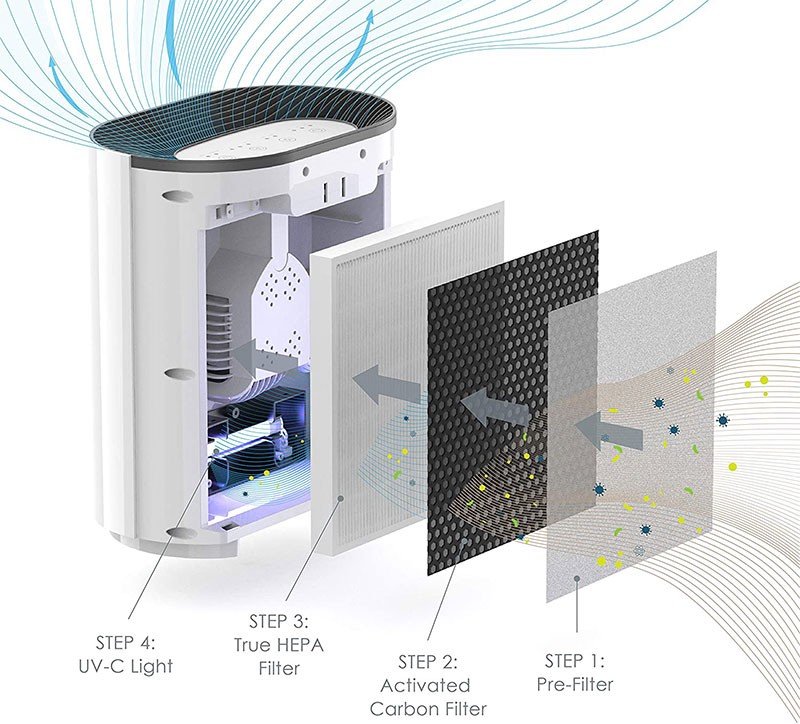Air purifiers clean the air in your home. They remove pollutants and allergens. These devices help you breathe easier. But how do they work? Let’s find out.
What is an Air Purifier?
An air purifier is a device that filters the air. It removes harmful particles like dust, pollen, and smoke. Some air purifiers also remove odors and bacteria.
Types of Air Purifiers
There are several types of air purifiers. Each type uses a different method to clean the air. Here are the most common types:
- HEPA Air Purifiers
- Activated Carbon Air Purifiers
- UV Light Air Purifiers
- Ionic Air Purifiers
- Ozone Generators
Hepa Air Purifiers
HEPA stands for High-Efficiency Particulate Air. HEPA air purifiers use a special filter. This filter captures tiny particles. It can trap particles as small as 0.3 microns. This includes dust, pollen, and pet dander.
Activated Carbon Air Purifiers
Activated carbon air purifiers use a carbon filter. This filter absorbs gases and odors. It can remove smoke, chemicals, and cooking smells. These purifiers are great for homes with smokers or pets.
Uv Light Air Purifiers
UV light air purifiers use ultraviolet light. This light kills bacteria and viruses. It can also destroy mold spores. UV light purifiers are often used in hospitals and clinics.
Ionic Air Purifiers
Ionic air purifiers release negative ions. These ions attach to particles in the air. This makes the particles heavy. They fall to the ground or stick to surfaces. You need to clean these surfaces to remove the particles.
Ozone Generators
Ozone generators produce ozone gas. Ozone can kill bacteria and viruses. But it can also be harmful to humans and pets. Use ozone generators with caution. They are best for unoccupied spaces.

Credit: www.youtube.com
How Do Air Purifiers Work?
Air purifiers work by pulling in dirty air. The air passes through one or more filters. The filters trap pollutants and allergens. Clean air is then released back into the room. Let’s look at each step in detail.
Step 1: Air Intake
The air purifier has a fan. This fan pulls air into the device. The air passes through a pre-filter. The pre-filter captures large particles. This includes dust and pet hair.
Step 2: Filtration
The air then passes through the main filter. This could be a HEPA filter, carbon filter, or another type. The main filter traps smaller particles. It removes pollutants like pollen, smoke, and bacteria.
Step 3: Air Treatment
Some air purifiers have additional treatments. UV light purifiers use ultraviolet light. This light kills bacteria and viruses. Ionic purifiers release negative ions. These ions attach to particles and make them fall.
Step 4: Clean Air Release
Finally, the clean air is released back into the room. The fan pushes the air out of the purifier. This process continues as long as the purifier is on.

Credit: housefresh.com
Benefits of Using an Air Purifier
Air purifiers offer many benefits. They improve indoor air quality. This can help with allergies and asthma. Here are some key benefits:
- Reduces Allergens: Air purifiers remove pollen, dust, and pet dander.
- Removes Odors: Activated carbon filters absorb odors and smoke.
- Kills Germs: UV light purifiers kill bacteria and viruses.
- Improves Sleep: Clean air can help you sleep better.
- Protects Health: Reduces the risk of respiratory issues.
Choosing the Right Air Purifier
Choosing the right air purifier is important. Consider the size of the room. Look for a purifier with a high CADR rating. CADR stands for Clean Air Delivery Rate. It measures how well the purifier cleans the air.
Room Size
First, measure the size of your room. Air purifiers are rated for different room sizes. A small purifier won’t work well in a large room. Check the product label for the recommended room size.
Cadr Rating
The CADR rating tells you how quickly the purifier works. Higher CADR ratings mean faster cleaning. Look for a CADR rating that matches your room size.
Filter Type
Consider the type of filter. HEPA filters are great for allergens. Activated carbon filters remove odors. UV light purifiers kill germs. Choose a filter that meets your needs.
Noise Level
Check the noise level of the purifier. Some purifiers can be loud. If you plan to use it in a bedroom, look for a quiet model.
Maintaining Your Air Purifier
Regular maintenance is important. It keeps your air purifier working well. Here are some tips:
- Change Filters: Replace filters as recommended. This is usually every 3-6 months.
- Clean Pre-Filters: Wash or vacuum pre-filters regularly.
- Check UV Bulbs: Replace UV bulbs as needed. They usually last about a year.
- Wipe Surfaces: Clean the exterior of the purifier. This prevents dust buildup.
Frequently Asked Questions
What Is An Air Purifier?
An air purifier removes contaminants from the air, improving indoor air quality.
How Does An Air Purifier Work?
An air purifier uses filters and fans to capture airborne particles and pollutants.
Do Air Purifiers Reduce Allergies?
Yes, air purifiers can reduce allergens like pollen, dust, and pet dander.
Can Air Purifiers Eliminate Odors?
Air purifiers with activated carbon filters effectively remove odors and volatile organic compounds (VOCs).
Are Air Purifiers Energy Efficient?
Modern air purifiers are designed to be energy efficient, consuming minimal power while operating.
Conclusion
Air purifiers are a great way to improve indoor air quality. They remove pollutants and allergens. This helps you breathe easier and stay healthy. Choose the right purifier for your needs. Maintain it regularly for the best results.
Now you know how air purifiers work. You can make an informed decision. Enjoy cleaner, fresher air in your home!
Rakib Sarwar is a Registered Pharmacist and a reputed health and wellness blogger. He has a great interest in Air purifiers.
